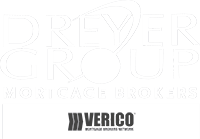Finance Your Home Renovations with Mortgage Solutions
Zach Silverman | December 4, 2024
Renovating your home can be an exciting way to enhance your living space and increase property value. However, not everyone has the upfront cash to pay for materials and contractors. If you’re looking for financial solutions, here are a few ways you can leverage mortgage financing to bring your renovation dreams to life.
For Existing Homeowners: Mortgage Refinancing
One of the most straightforward options for financing home renovations is accessing your home equity through a mortgage refinance. This solution allows you to borrow against the value of your home to fund your upgrades.
Mid-Term Mortgage Refinancing -
Depending on the terms of your current mortgage, a mid-term refinance may be a smart financial move. It could even lower your overall borrowing costs while adding the renovation expenses to your mortgage. Since every financial situation is unique, it’s worth discussing your options and crunching the numbers to see what works best for you.
Refinancing at Renewal -
If you’re not in a rush, consider waiting until your mortgage comes up for renewal. Refinancing at this time can help you avoid penalties for breaking your existing mortgage early. Whether you refinance mid-term or at renewal, you may qualify to access up to 80% of your home’s appraised value, providing ample funds for your renovation project.
Home Equity Line of Credit (HELOC)
Another popular choice for homeowners is a Home Equity Line of Credit (HELOC). This option allows you to tap into your home’s equity without refinancing your mortgage.
Why Choose a HELOC?
Unlike an unsecured line of credit, which often comes with higher interest rates, a HELOC uses your home as collateral. This typically results in more favorable borrowing terms, such as lower interest rates and higher credit limits. Whether you need a one-time lump sum or a flexible line of credit, a HELOC offers versatility to match your needs.
Let’s explore how a HELOC could work for your renovation goals—contact us anytime for more details.
For Buyers: Purchase Plus Improvements
If you’re shopping for a property that needs a little TLC, a Purchase Plus Improvements mortgage might be the perfect solution. This program allows you to add renovation costs directly to your mortgage, simplifying the process of upgrading your new home.
What to Keep in Mind
To qualify, your renovations must increase the property’s value. The process involves specific steps and documentation, but don’t worry—we’ll guide you every step of the way.
Let’s Make Your Renovation Dreams a Reality
Whether you’re an existing homeowner or a first-time buyer, there are plenty of ways to finance your home renovation through mortgage solutions. Every financial situation is unique, and we’re here to help you find the best option. Contact our team at Silverman Mortgage today to discuss your goals and create a tailored plan to bring your vision to life.





